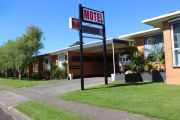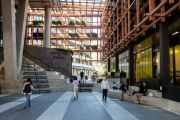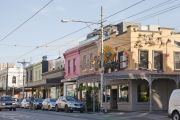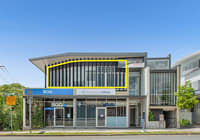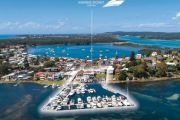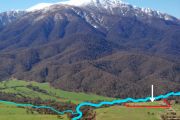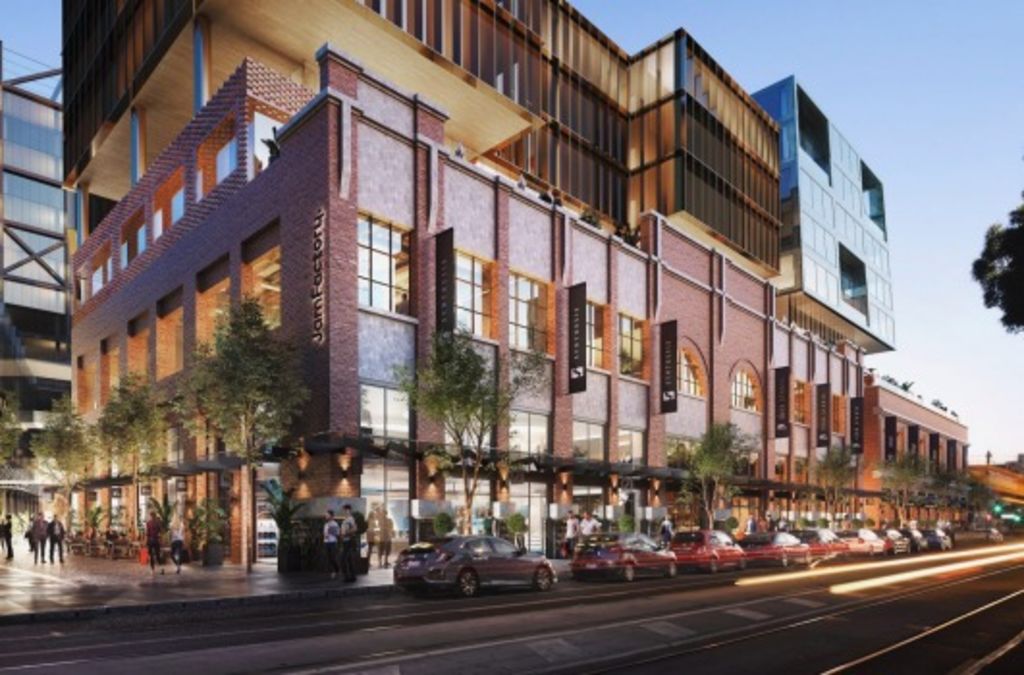
Melbourne's strong economy helps retailers cash in - for now
A population surge and strong economy are among the reasons Victoria has recorded the country’s highest retail growth rate.
But a slowdown is coming, according to agency Savills, to be led by higher household debt, weak wages growth and moderating housing construction, which “has impacted discretionary spending in some sub-sectors such as ‘hardware and garden’ and ‘cafes and restaurants’ “.
A rise in full-time jobs recently will help retail trade. But the sector is still facing challenges, chief amongst them online rivals.
“Customer expectations to match global trends as well as competition from online sales has encouraged many [shopping complex] landlords to redevelop or expand their centres,” Savills associate director research & consultancy Katy Dean said.
Shopping centre supply in 2017 was driven by construction in the sub-regional category, including the 25,000-square-metre Tarneit Central, 25 kilometres west of the CBD.
Five smaller shopping centres, classified as neighbourhood centres, also opened last year. Three expanded – in all cases, according to Savills, to meet increasing demand of rising population.
Close to 80,000 square metres of retail space was added to retail stock in the 12 months to December 2017. By comparison, about 30,000 square metres is forecast to be added in 2018, rising to about 50,000 square metres next year, then dropping to less than 40,000 in 2020.
Major refurbishments and expansions mooted for the next couple of years include at Westfield Knox, which is actually in Wantirna South, about 26 kilometres east of town, and the Jam Factory complex in South Yarra, in the city’s inner south.
According to agency CBRE, retail at present is a two-tiered market, “with CBD locations experiencing stronger leasing interest than suburban malls”.
A hallmark of Melbourne CBD retail in recent years has been the arrival of international brands, especially those in the fashion business – H&M and Zara amongst them.
However, one retailer, Topshop, which arrived in Australia with much fanfare in 2011 when it opened its first store in trendy Chapel Street, South Yarra, has not fared so well. Blaming competition from online and stores surrounding its then-nine national outlets, Topshop announced last year it would close five stores – including in Melbourne, that Chapel Street outlet, and another at the Highpoint Shopping Centre in Maribyrnong, about eight kilometres north-west of the CBD.
Successful strategy
Shopping-centre owners every which way of the city have been delivered a planning boon in recent years, with the government increasingly open to the idea of allowing residential apartments to be developed on what was once exclusively commercial land.
The strategy has its advantages – including placing residents close to public transport nodes (these centres are often serviced by buses, trams and, in some cases, trains).
But it also suits retailers, with a defined customer base potentially just a few hundred metres away.
One of the most ambitious mooted mixed-use redevelopments of a shopping centre is earmarked for Highpoint – which after a $680 million deal for a half-share last August – is now fully owned by GPT.
Longer-term plans for the centre include replacing the airspace with a hotel, university and medical hub. Despite being recently increased in size by 20 per cent, Highpoint’s lettable retail area is also mooted for a 30,000-square-metre expansion, which may add a second Coles supermarket, international retailers and a new leisure and entertainment space.
GPT is also considering adding floors to its Melbourne Central complex in the CBD: the reported $70 million rooftop expansion to deliver retail, leisure and entertainment areas, too.
About 21 kilometres south-east of Melbourne at The Glen in Glen Waverley, co-complex owners Vicinity Centres and Perron Group confirmed a $490 million expansion last year – the first stage of which will include a Fresh Food Market, anchored by Aldi, Coles and Woolworths supermarkets. A second food gallery is also mooted for the 50-year-old mall. High-end retailer David Jones has also committed to 8000 square metres.
Controversially to many in the local community, this redevelopment will add three apartment towers, rising in height from between 12 and 20 storeys, on part of the site at the corner of Springvale and High Street roads. Assumed to be complete by 2020, the residential component will add more than 530 dwellings.
The enormous Chadstone Shopping Centre – which recently underwent its 40th expansion, valued at $660 million, saw more than 34,000 square metres of retail space added (this complex is now more than 200,000 square metres). It also added a 10-storey, 17,000-square-metre office, with views to the Melbourne CBD, about 17 kilometres away.
Five months ago, Chadstone Shopping Centre’s co-owners, Vicinity Centres and the Gandel Group, announced plans for a $130 million MGallery by Sofitel Hotel (to be managed by AccorHotels), to cater for its office users, and attract tourists to the pocket. Set for construction on land between the shopping centre and the office tower, on the Princes Highway, the hotel is set to include 250 suites, capturing vistas to the CBD, Port Phillip Bay and the Dandenong Ranges.

